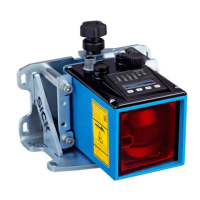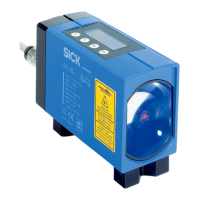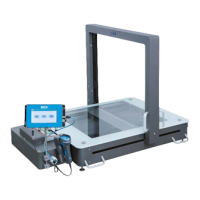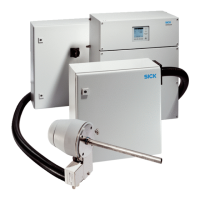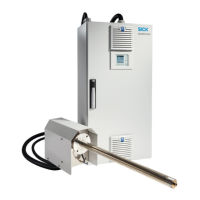8015416/ZPN2/2017-09-08 • © SICK AG • Subject to change without notice 83
Operating instructions Distance measuring device DL100 – CANopen®
CANopen®-interface
Identier11-bit(binary) Identier(decimal) Identier(hexadecimal) Function
2022 – 2047 7E6h – 7FFh Not assigned
xxxxxxx = Node–ID 001–127
yyyyyyy = Node–ID 001–032
zzzzzzz = Node–ID 033–064
Table 55: Illustration of the CANopen
®
services and the associated CAN-IDs
10.5.10 PDO and SDO
PDO In CANopen
®
, the process data are structured in segments at up to 8 bytes.
These segments are called process data objects (PDOs) and serve to trans-
port real-time data. The PDOs corresponds to a CAN telegram each and are
assignedviaitsspecicCANidentieranddeterminedintheirpriority.A
dierenceismadebetweenreceivePDOs(RPDOs)andtransmitPDOs(TP-
DOs). The designation is applied from the device’s point of view. The DL100
does not contain any RPDOs.
SDO A server SDO object provides a service for parameterizing of object direc-
tory entries. Each CANopen
®
device needs at least one server SDO object
(1200h) that receives and sends requests.
The service data objects are addressed via index and subindex. Data can
be requested from the master or written into the object. The function is
denedviathe“Functioncode”oftheCOB-ID:
• 580h+Node-ID:Master<Slave
• 600h+Node-ID:Master>Slave
Entries in the object directory are transmitted with these relatively high and
therefore low-priority IDs.
There is a protocol for this SDO transfer. 4 bytes are needed for encoding of
the transmission direction of the index and subindex. The other 4 bytes of
the8bytesofaCANdataeldareavailableforthedatacontent.
For objects with a data content in excess of 4 bytes, there are two addition-
al protocols for the fragmented SDO transfer.

